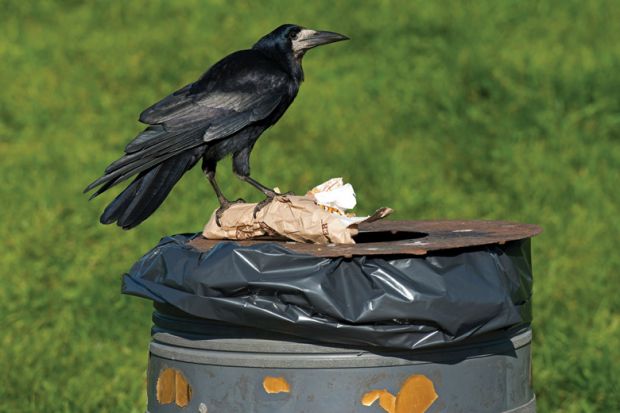Remember Aesop’s thirsty crow? Not long ago I watched a video of a study that recreated this problem. It involved a rook rather than a crow and a food item rather than a drink. Presented with a tube of water on which floated an inaccessible juicy grub, the rook – without ever having seen the experimental set-up before – dropped in pebbles to raise the water level and secure the reward, exactly as Aesop’s crow had done. Pure insight!
Who would have thought that birds could be cleverer than apes? But they are, or at least some of them are. Corvids – members of the crow family, including rooks and crows – and parrots are among the smartest.
Our understanding of bird brains and behaviour has been revolutionised by recent studies of avian cognition, intelligence, brain anatomy, migration and tool use, and Nathan Emery, primatologist-turned-ornithologist, has been at the forefront of this revolution. He is well placed, therefore, to provide us with this very welcome summary of our current state of knowledge.
Bird Brain’s format is magazine-like, with about 70 double-page spreads, each dealing with a separate topic. The design is attractive and the text well written, but more than once I found myself asking who this book was written for. The non-specialist reader will find some of the terminology challenging, and particularly that relating to brain regions. Testing a bird’s cognitive skills tests the researcher’s skills too, which means that it is often necessary to design extremely intricate experiments. The attractive diagrams employed to explain some of the experimental set-ups will, I suspect, also test readers’ cognitive abilities.
Emery’s book covers a lot of ground, literally, including how birds navigate during migration; how they remember where they have hidden food (common in corvids); how they communicate with each other using vision and song; how and why some species live in groups; how and why certain birds use tools (a wire-bending New Caledonian crow named Betty – now deceased – became a global star for her skills); and the emotionally charged issue of whether birds experience empathy.
As Emery explains, there are four attributes that enable birds, like the rook with the water tube, to solve problems that they have never previously encountered: flexibility, imagination, prospection (thinking ahead) and causal reasoning. I like the idea that imagination, once considered a uniquely human trait, allows birds to engage in a form of mental trial and error to anticipate the outcome of their actions.
Not all birds are born equal and the problem-solving abilities of crows and parrots are better than those of pigeons and chickens, possibly because the former have relatively larger brains, and as Emery tells us, bigger brains mean more neurons. But there must be more to it than that; a sloth has a bigger brain than a crow, so why do sloths appear so dull? The answer, provided by a recent study, is that the density of neurons in bird brains is much higher than that in mammals (including primates), and also that the density of neurons in corvid and parrot brains is especially high.
This is an exciting area of research, and as this fascinating book shows, researchers have only just begun to explore the subtleties of the bird’s brain.
Tim Birkhead is professor of behaviour and evolution, University of Sheffield. He is author, most recently, of The Most Perfect Thing: the Inside (and Outside) of a Bird’s Egg (2016).
Bird Brain: An Exploration of Avian Intelligence
By Nathan Emery
Ivy Press, 192pp, £20.00
ISBN 9781782403142
Published 4 August 2016
Register to continue
Why register?
- Registration is free and only takes a moment
- Once registered, you can read 3 articles a month
- Sign up for our newsletter
Subscribe
Or subscribe for unlimited access to:
- Unlimited access to news, views, insights & reviews
- Digital editions
- Digital access to THE’s university and college rankings analysis
Already registered or a current subscriber? Login






